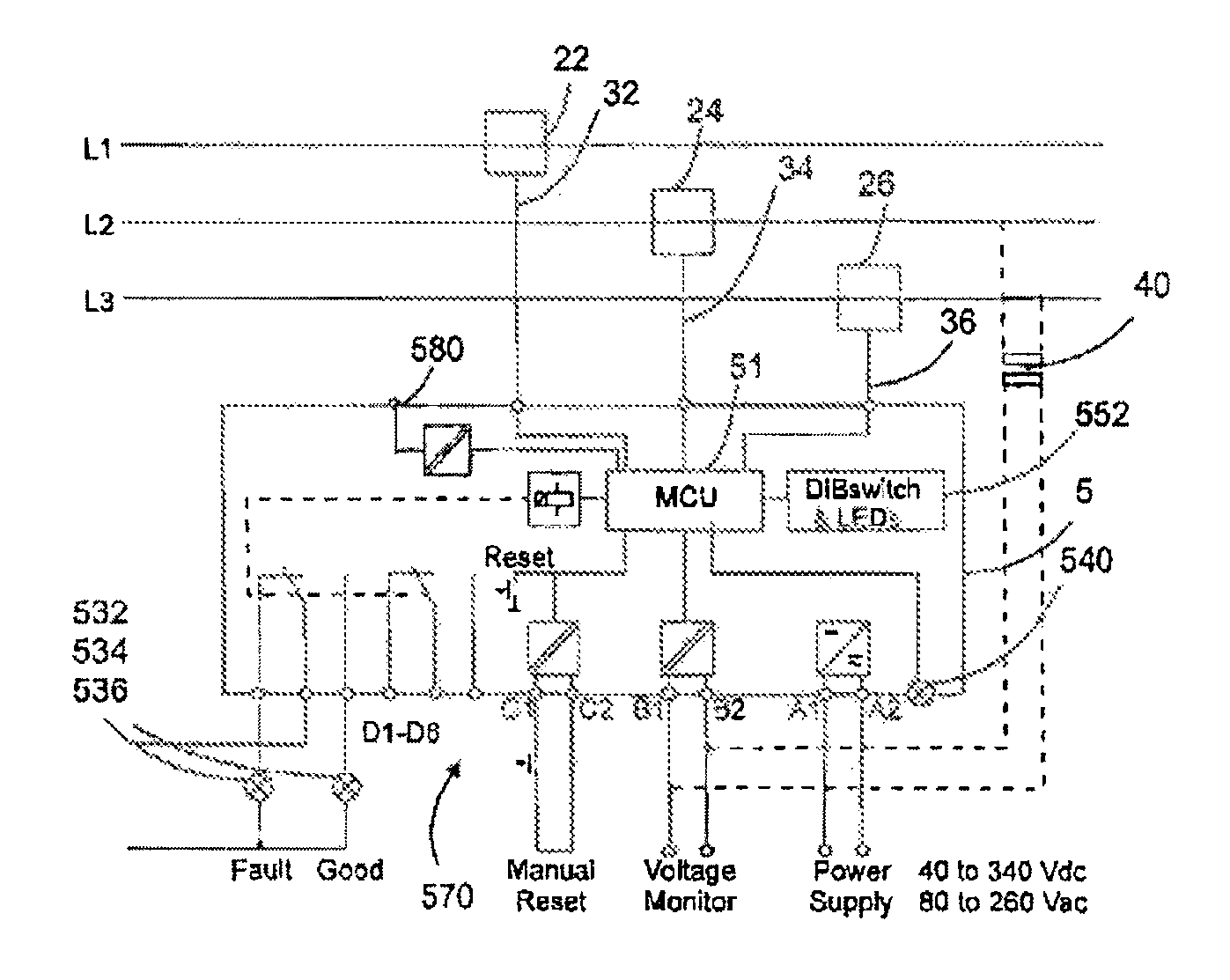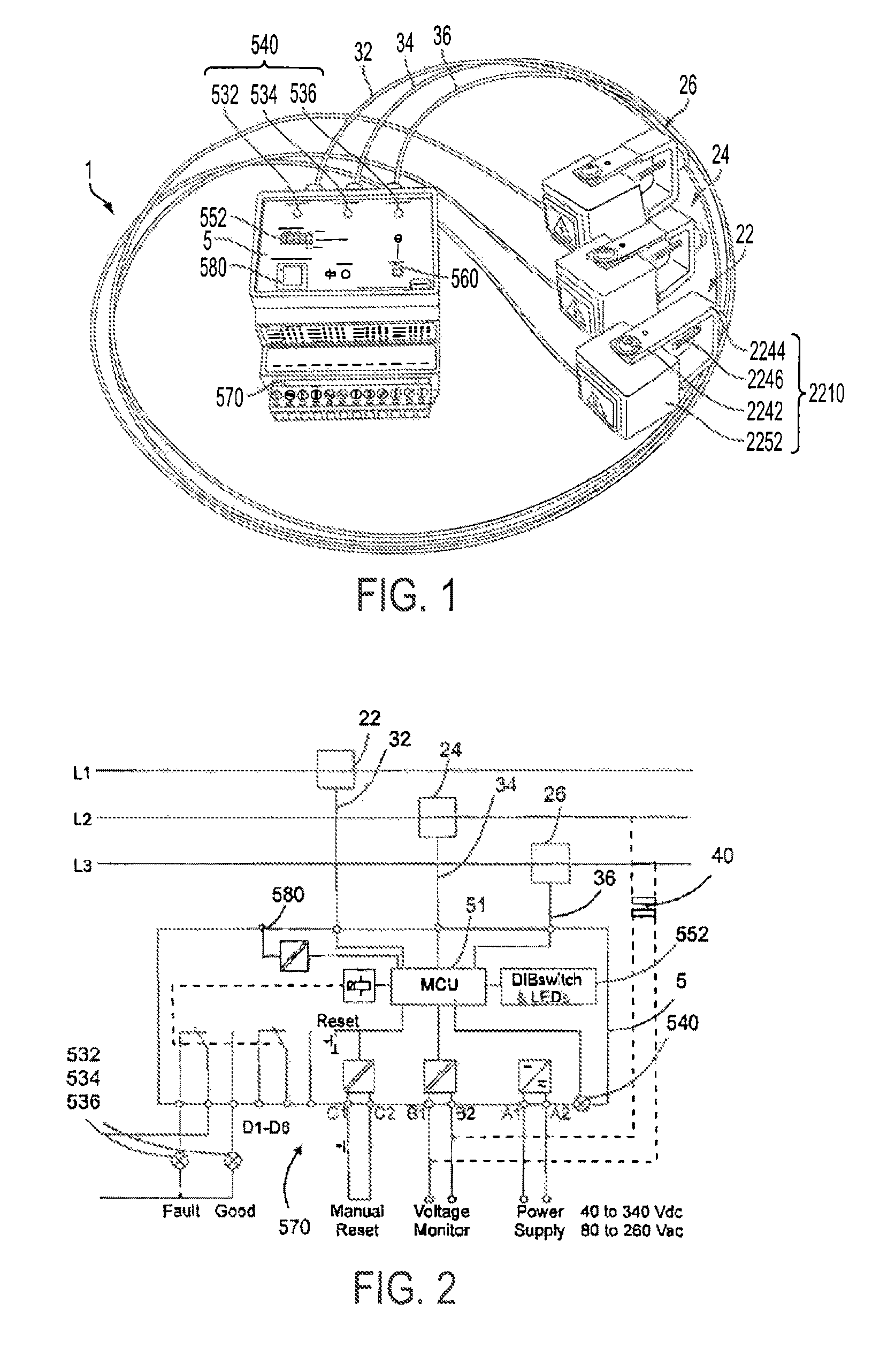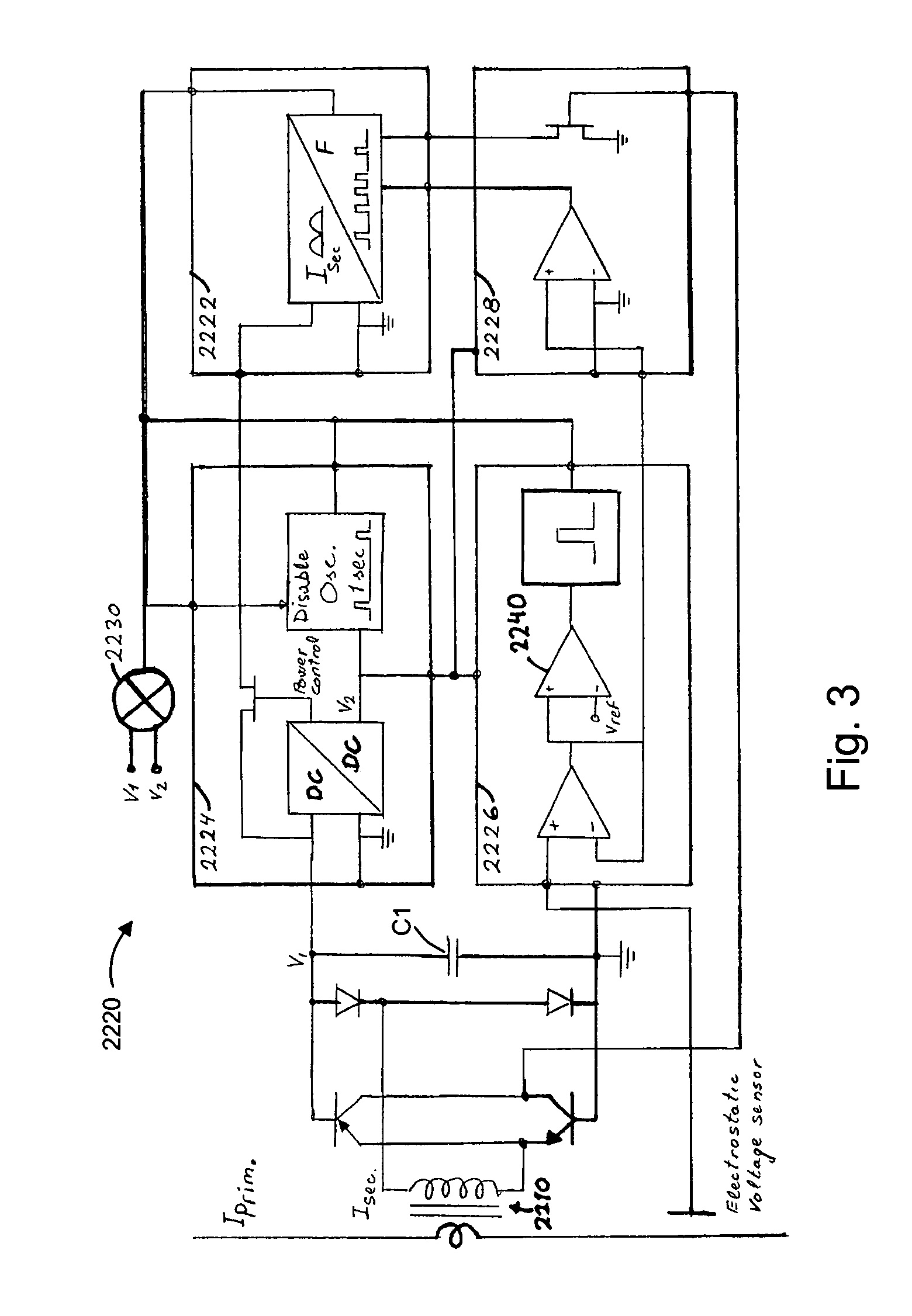AC current sensor for measuring electric AC current in a conductor and an indicator system comprising such a sensor
a technology of electric ac current and sensor, which is applied in the direction of short-circuit testing, air-break switch details, transmission, etc., can solve the problems of reducing maintenance and planning costs of electric power distribution companies, not being able to detect, convey, and too costly, so as to reduce maintenance time and planning costs. , the effect of reducing the time needed
- Summary
- Abstract
- Description
- Claims
- Application Information
AI Technical Summary
Benefits of technology
Problems solved by technology
Method used
Image
Examples
first embodiment
[0103]Said voltage measurement means may be provided in two ways: In a first embodiment said voltage measurement means is a separate voltage measurement monitor 40, as shown in FIG. 2, which may be the provided by the main transformer used at the site, providing a measurement to be relayed to the MCU for a determination as to whether the voltage is lost, i.e. below said voltage threshold Vmin, e.g. from 10 to 50% of nominal voltage or less, after said predetermined time period t1.
[0104]In a second embodiment, the voltage measurement means and voltage threshold means are provided integrally 2240 within the current sensor 22 in a voltage lost indication circuitry 2226, as indicated in FIG. 3, for providing an electrostatic voltage measurement of said electric conductor, which may be implemented using various available components, being adapted to provide said non-electrical wave signal as a voltage lost indication signal VLS, the presence of which is indicating that the voltage over s...
second embodiment
[0116]As shown in FIG. 3, the sensor circuitry 2220 further comprises power flow direction indication circuitry 2228. Two different embodiments are contemplated, a first 2228A for providing information concerning voltage measurements for a subsequent power flow direction determination in the detection unit 5, e.g. providing two distinct pulse signals having each their pulse frequency PfPA and PfPP, one corresponding to the phase angle and one the polarity of said measured voltage, said pulse signals being emitted from said means for emitting a non-electrical wave signal; and a second embodiment, wherein the flow direction determination is performed within the sensor circuitry, providing a singular pulse signal having binary values based on a continuous determination of the current flow direction. Other ways of indicating power flow direction is known to the skilled person, relayed to the detection unit 5. Correspondingly, the detection unit 5 is able to differentiate and translate t...
PUM
 Login to View More
Login to View More Abstract
Description
Claims
Application Information
 Login to View More
Login to View More - R&D
- Intellectual Property
- Life Sciences
- Materials
- Tech Scout
- Unparalleled Data Quality
- Higher Quality Content
- 60% Fewer Hallucinations
Browse by: Latest US Patents, China's latest patents, Technical Efficacy Thesaurus, Application Domain, Technology Topic, Popular Technical Reports.
© 2025 PatSnap. All rights reserved.Legal|Privacy policy|Modern Slavery Act Transparency Statement|Sitemap|About US| Contact US: help@patsnap.com



